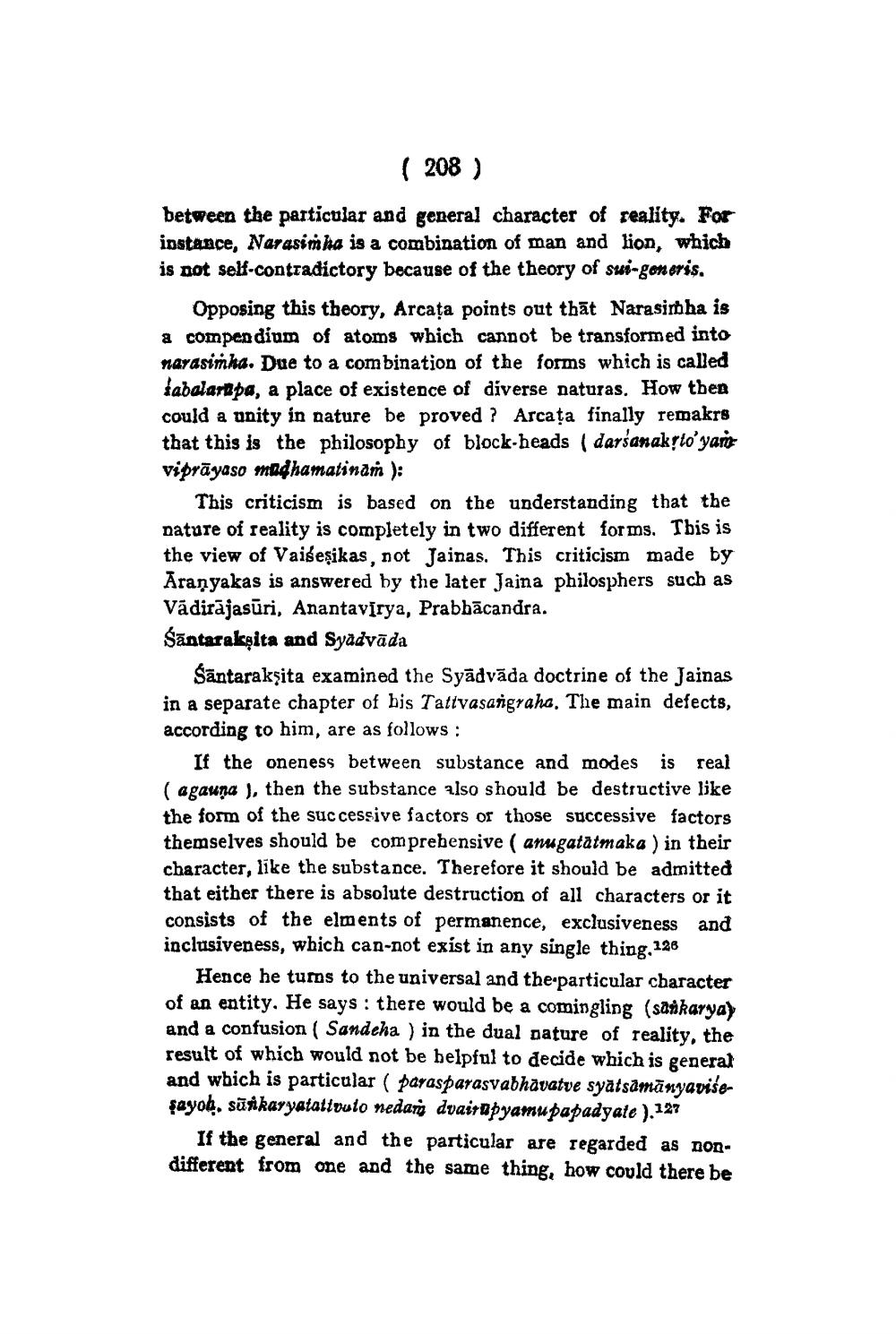________________
( 208 )
between the particular and general character of reality. For instance, Narasimha is a combination of man and lion, which is not self-contradictory because of the theory of sui-goneris.
Opposing this theory, Arcața points out thāt Narasimha is a compendium of atoms which cannot be transformed into narasimha. Due to a combination of the forms which is called labalar pa, a place of existence of diverse naturas. How thea could a unity in nature be proved ? Arcața finally remakrs that this is the philosophy of block-heads ( darsanaklo' yan viprāyaso madhamatinań ):
This criticism is based on the understanding that the nature of reality is completely in two different forms. Tbis is the view of Vaiseşikas, not Jainas, This criticism made by Aranyakas is answered by the later Jaina philosphers such as Vădirājasūri, Anantavīrya, Prabbācandra. Santarakṣita and Syadvāda
Santarakṣita examined the Syādvāda doctrine of the Jainas in a separate chapter of his Tattvasangraha. The main defects, according to him, are as follows:
If the oneness between substance and modes is real ( agauna ), then the substance also should be destructive like the form of the successive factors or those successive factors themselves should be comprehensive ( anugatatmaka ) in their character, like the substance. Therefore it should be admitted that either there is absolute destruction of all characters or it consists of the elments of permanence, exclusiveness and inclusiveness, which can-not exist in any single thing, 126
Hence he turns to the universal and the particular character of an entity. He says: there would be a comingling (saskarya) and a confusion ( Sandeha ) in the dual nature of reality, the result of which would not be belpful to decide which is general and which is particular ( parasparasvabhavatve syatsamānyavisesayob, sūrkaryatattvuto nedaro dvaitapyamupapadyate ).127
If the general and the particular are regarded as nondifferent from one and the same thing, how could there be




